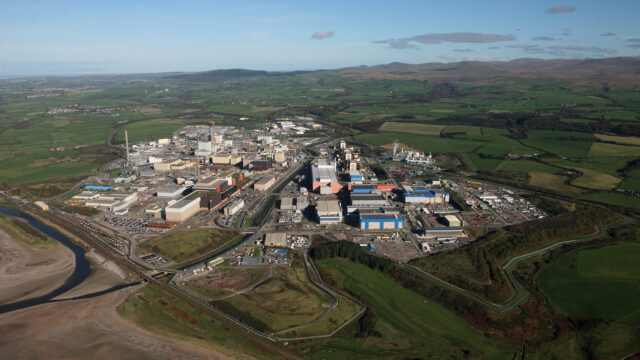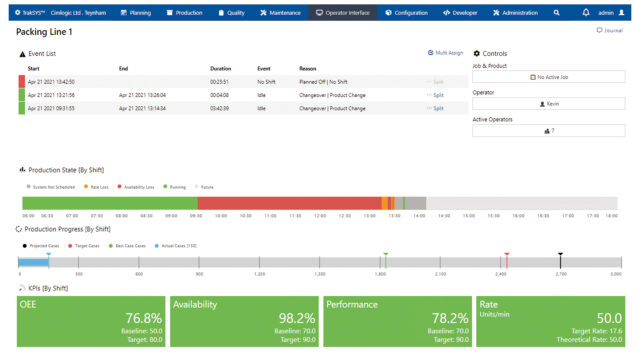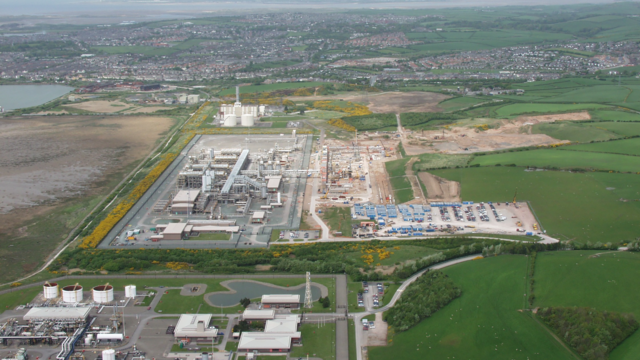The EDF facility’s previous Supervisory Control and Data Acquisition (SCADA) system was installed in the 1990s and had become obsolete and unsupported.
A replacement SCADA System, data acquisition, networking and communications infrastructure, integrated into the existing legacy plant, was required in order to ensure continued availability of the AIC.
Supply Chain Collaboration
ITI Group worked on behalf of AMS Nuclear Engineering to design, implement, test and commission a replacement SCADA system that replicated the functionality of the obsolete SCADA system but using modern, supported computer equipment, while retaining the legacy plant instrumentation devices in order to minimise the impact on the plant interfaces.
AMS provided the hardware design and installation, and ITI Group created, integrated and installed the SCADA system. AMS’s existing presence at the Hinkley B site provided a thorough understanding of EDF’s operations and ITI’s experience of supply chain collaboration ensured the unified delivery of a solution that seamlessly integrated into the end client’s existing assets and operations.
Seamless integration into legacy systems
Full functionality redundancy
Improved HMI ergonomics
Reliable logging of new and historical data
“High levels of communication made it very easy to collaborate”
“ITI Group’s technical knowledge of current and archaic systems and protocols was highly valuable: it would have been difficult to deliver the project without this. High levels of communication made it very easy to collaborate and keep track of the project status”
Liam White – AMS Nuclear Engineering
Replicated Functionality
The key functional requirements of the previous system were defined using the original documentation and then replicated in the design of the replacement, which involved complex logic processing scripts. The use of Commercial of the Shelf packages including Siemens Win CC SCADA software provided the majority of the required functionality and ensured supportability, with application specific components, including a custom OPC Server, enabling the integration of the new technology with the legacy equipment.
ADVANCED FEATURES
More than just a replacement, the new SCADA system provides a variety of additional functionality now achievable through modern technology:
The screen displays combine modern human factors best practice into the general layouts from the existing system in order to maximise ease of use for the operators.
Increased data capacities enable permanent logging of the key parameters.
Two independent servers scan data from both reactors to provide redundancy and ensure that full system functionality is available even in the event of a server fail.
Seamless Integration
The data acquisition architecture was designed to avoid any disturbance or modification of the existing plant data acquisition devices while retaining the same data input/output behaviour as the previous system. Solartron SNET PCI cards interface the new industrial Windows-based PCs with the legacy SNET cabling in order to replace the obsolescent networking and interface devices.
A custom device driver, based on similar solution for other EDF data acquisition applications, provides access to the IMP devices via an industry standard open platform communications (OPC) interface. A fingerprinting exercise was performed to intercept and capture the data acquisition protocol traffic to ensure that the new driver software replicated the existing protocol behaviour.
Implementation and Testing
Thorough testing prior to commissioning ensured that the system behaved as required. Off-site testing of the data acquisition processing used a test environment comprising the various types of IMP devices in the system, a simulation environment to represent the entire data acquisition system and a test injection tool to simulate various plant states to ensure the correct operation of the complex logic processing.
How we’ve helped other businesses like yours

Sellafield FGMSP Digital Twin and 3D Planning Tool
ITI Group worked with Sellafield to create a digital twin of the FGMSP, plus an integrated 3D interactive planning tool, to determine the most effective sequences for waste removal based on a myriad of interdependencies.

Purity Soft Drinks Achieved Efficiency Improvements of 20%
Leading soft drinks manufacturer achieves OEE efficiency gains and data insight to drive continuous improvement from real-time OEE platform.

Spirit Energy Digital Transformation
After just one year of collaborating with ITI Group on their Digital Transformation programme, Spirit Energy are already seeing the benefits of a properly managed data solution.
How can we help you?

